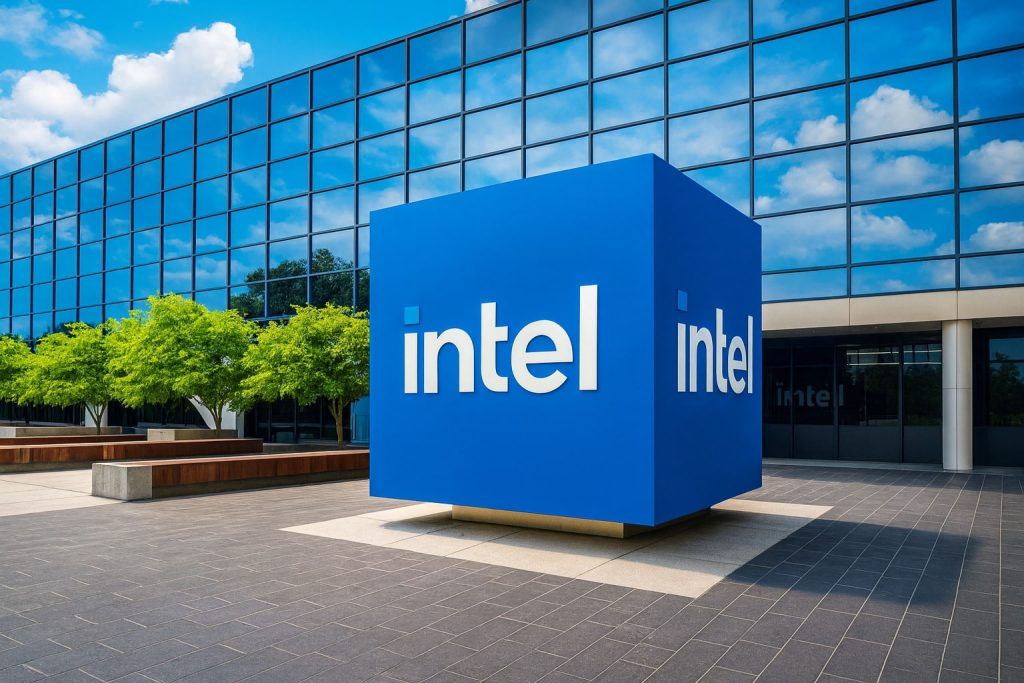- Price Spike: Ford’s share price (NYSE: F) jumped roughly 10% after hours on Oct. 23, closing around $13.8 on Oct. 24 [1]. This put Ford near its 52-week high and capped a roughly 20–25% year-to-date gain [2].
- Strong Q3 Results: In Q3 2025 Ford reported $50.5 billion in revenue (up 9% YoY) and adjusted EPS of $0.45, well above consensus (~$0.36) [3]. After the earnings beat, Ford stock popped ~4% in after-hours trading [4].
- Guidance Cut: Management warned the Novelis aluminum plant fire (Sept. 16) would shave about $1.5–$2.0 billion off 2025 earnings [5]. Full-year EBIT guidance was cut to $6.0–$6.5 billion (down from $6.5–$7.5B) [6]. CFO Sherry House noted Ford “would have raised guidance had it not been for the Novelis fire” [7].
- EV and Quality Headwinds: Ford’s EV division (“Model e”) lost ~$1.1B in Q3 [8]. U.S. EV sales are down ~30% year-over-year, leaving Ford with only about a 5% EV market share [9]. Meanwhile, Ford has announced over 100 safety recalls this year. In October alone it recalled ~1.45 million vehicles for faulty backup cameras and ~625K for camera/seatbelt defects [10] [11]. (Regulators fined Ford $165M in 2024 for slow recalls.)
- Dividend & Valuation: Ford pays a $0.60 annual dividend (about 5% yield) [12], among the highest in the auto industry. Its stock trades at roughly 15× forward EPS [13], below many peers. Many analysts see the generous dividend and strong truck franchise as a buffer against Ford’s EV and recall challenges.
Ford’s Q3 report showed the strength of its core businesses. Wall Street cheered the upside surprise: revenue of $50.5B and EPS of $0.45 easily topped forecasts [14]. In after-hours trading on Oct. 23 the stock leapt again, taking the price to about $13.68 by Oct. 24 [15]. TechStock² notes that this rally broke above Ford’s long-standing trading range (~$10–13), with momentum indicators still healthy [16]. The market seems to be rewarding Ford’s focus on profitable growth areas, notably commercial fleets and full-size trucks. Indeed, Ford’s “Blue” (gasoline) vehicles and its Ford Pro fleet division drove most of the gains, while the EV arm remains unprofitable [17].
At the same time, management reiterated that Ford is navigating one-off headwinds. The Sept. 16 fire at Novelis’ NY aluminum plant (a key supplier for F-150 trucks) is expected to cut roughly $1.5–$2.0 billion from Ford’s 2025 results [18]. To account for that disruption, Ford trimmed full-year operating profit guidance to $6.0–$6.5B [19] (down from $6.5–$7.5B). CEO Jim Farley has been active on this, visiting the plant site and securing alternate supplies. As Farley put it, the team has made “substantial progress…to minimize the impact in 2025 and recover production in 2026” [20]. Ford also plans to add shifts in Michigan and Kentucky next year to build an extra 50,000 trucks – roughly half the expected production loss [21]. Notably, Ford paused production of the F-150 Lightning EV to free capacity for more profitable gasoline trucks [22]. In essence, the company is prioritizing its cash-generating models while it works through the supply bottleneck.
Ford’s electric-vehicle strategy remains under pressure. The Model e division is still burning cash – about $1.1B lost in Q3 [23] – and Ford has delayed or cancelled several upcoming EV launches. With U.S. tax credits for EVs now expired, demand is sliding: TS2.tech notes U.S. EV sales are about 30% lower YoY this year [24]. By contrast, Ford’s traditional trucks and SUVs are enjoying robust demand. In Q3 U.S. truck/SUV sales rose 8.2% year-over-year [25]. These high-margin models help bankroll the dividend; Ford still pays $0.15 quarterly (≈5% yield) and has maintained it through the turmoil [26]. Analysts caution that Ford must avoid “self-inflicted” setbacks – such as more recalls or execution missteps – if it hopes to sustain a turnaround [27].
Quality issues have been a thorn in Ford’s side. The company has now disclosed dozens of safety recalls in 2025, including massive camera-related recalls in October. Ford recalled ~1.45 million U.S. vehicles on Oct. 22 due to faulty rear-view cameras [28], and nearly 625,000 more for a camera-display defect and seatbelt problems earlier in the month [29]. Regulators note Ford’s camera recall woes date back to 2019 and earlier NHTSA probes [30]. While Ford says the latest fixes won’t materially dent profits [31], these quality lapses do temper investor enthusiasm.
On the policy front, Ford has some tailwinds. The new U.S. administration expanded a credit for domestically made vehicles (3.75% of MSRP through 2030) [32], which helps offset recent tariffs on auto parts. Ford is relatively well positioned here – about 79% of its U.S.-sold vehicles are built domestically [33] – so it will benefit more from the credit than some rivals. Labor costs have risen too: after the 2023 UAW strike Ford agreed to hefty wage increases over the 2024–28 contract [34]. No new work stoppages are expected, but higher pay will pressure margins slightly in the near term.
Analysts and strategists remain broadly cautious. Most rate Ford a “Hold” with 12-month targets in the low-to-mid $11s [35] [36], roughly flat on the year. Yet sentiment has brightened: several firms lifted their targets into the $15–16 range following the October beat [37]. Tech analysts point out Ford’s stock has long been stuck in an ~$8.60–$13 range, so breaking above ~$13.20 (as it did this week) could open a run into the mid-teens [38] [39]. TS2.tech even notes that if Ford can “deliver trucks, avoid new quality fiascos, and steadily improve EV economics – the underlying value will shine through” [40]. On the flip side, even CNBC’s Jim Cramer warned that any big earnings setback could quickly send Ford “slipping below $11” again [41].
For context, Ford’s peers have had mixed outcomes. General Motors (NYSE: GM) reported a strong Q3 and on Oct. 21 raised its full-year profit forecast – lifting GM stock ~15% [42]. Tesla (NASDAQ: TSLA) beat on revenue in Q3 but missed on profit (after-tax credits), and its share fell about 4% [43]. Smaller EV maker Rivian (RIVN) cut its 2025 vehicle-delivery forecast after the end of U.S. tax credits, putting further pressure on its stock [44]. Against this backdrop, Ford is often seen as a relatively cheap cyclical bet, given its strong legacy brands and high dividend.
In summary, Ford’s stock has jumped on the October earnings beat, but the rally faces tests. The supplier-fire hit is largely seen as a one-time shock [45], and Ford is investing to recover next year’s production. If the company can translate solid truck/SUV demand into profits while keeping its EV and recall issues under control, many analysts believe Ford could sustain its uptrend [46] [47]. Investors will be watching Ford’s next quarters closely – especially whether it can grow profits again in 2026 as Wall Street expects, or if any new “self-inflicted” problems emerge [48].
Sources: Official Ford financial filings and press releases; TechStock² (ts2.tech) analysis [49] [50] [51]; news reports from Reuters, CNBC, Investing.com, et al. on Q3 earnings, the Novelis plant fire, recalls, and industry trends [52] [53] [54] [55] [56] [57] [58]. Citations above.
References
1. ts2.tech, 2. ts2.tech, 3. www.reuters.com, 4. ts2.tech, 5. www.reuters.com, 6. www.reuters.com, 7. www.reuters.com, 8. ts2.tech, 9. ts2.tech, 10. www.reuters.com, 11. www.reuters.com, 12. ts2.tech, 13. ts2.tech, 14. www.reuters.com, 15. ca.investing.com, 16. ts2.tech, 17. ts2.tech, 18. www.reuters.com, 19. www.reuters.com, 20. ts2.tech, 21. www.reuters.com, 22. www.reuters.com, 23. ts2.tech, 24. ts2.tech, 25. ts2.tech, 26. ts2.tech, 27. ts2.tech, 28. www.reuters.com, 29. www.reuters.com, 30. www.reuters.com, 31. ts2.tech, 32. www.reuters.com, 33. ts2.tech, 34. ts2.tech, 35. ts2.tech, 36. ts2.tech, 37. ca.investing.com, 38. ts2.tech, 39. ca.investing.com, 40. ts2.tech, 41. ts2.tech, 42. www.reuters.com, 43. www.reuters.com, 44. www.reuters.com, 45. www.reuters.com, 46. ca.investing.com, 47. ts2.tech, 48. ts2.tech, 49. ts2.tech, 50. ts2.tech, 51. ts2.tech, 52. www.reuters.com, 53. www.reuters.com, 54. www.reuters.com, 55. www.reuters.com, 56. ca.investing.com, 57. ca.investing.com, 58. www.reuters.com








